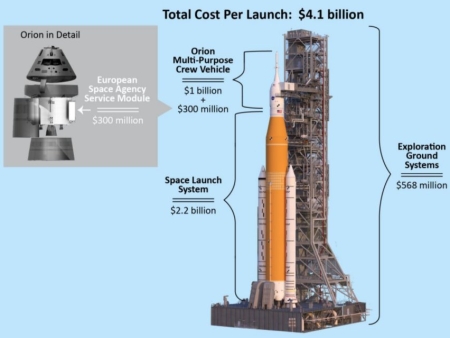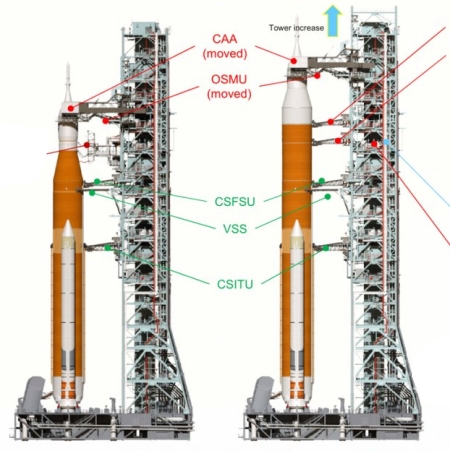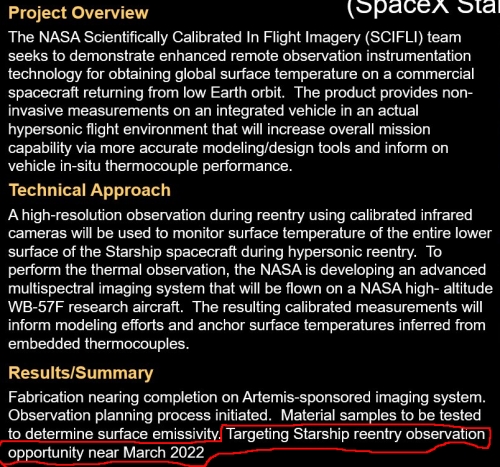Third SLS dress rehearsal countdown scrubbed before completion
NASA engineers today scrubbed their third attempt to complete a dress rehearsal countdown of the agency’s giant SLS rocket when a leak was detected in a hydrogen fuel line.
The team will not conduct the terminal countdown activities today as planned and will assess next steps after today’s operations.
The problem appears to be “a leak … in the tail service mast umbilical.”
It is not clear yet how much of the countdown and fueling will be completed. Because of a faulty valve in the upper stage, NASA management had already decided to eliminate fueling of the rocket’s upper stage from the rehearsal. The problem today appears to involve the core first stage’s hydrogen tanks, which are presently partly filled only about 5%. Based on their last tweet, it appears they have not drained the tank, though they apparently will not continue the rehearsal today.
UPDATE: NASA just tweeted the following:
Teams have confirmed they have satisfied the test objectives for the ICPS [upper stage] LH2 [hydrogen tank] chilldown and after gathering additional data, will work to drain propellant from the rocket. They will inspect the TSMU umbilical connection, review data, and establish a go-forward plan.
This sounds as if the agency might decide they have completed enough of the dress rehearsal to consider it complete, and will now roll the rocket back to the vehicle assembly building for further check out.
NASA engineers today scrubbed their third attempt to complete a dress rehearsal countdown of the agency’s giant SLS rocket when a leak was detected in a hydrogen fuel line.
The team will not conduct the terminal countdown activities today as planned and will assess next steps after today’s operations.
The problem appears to be “a leak … in the tail service mast umbilical.”
It is not clear yet how much of the countdown and fueling will be completed. Because of a faulty valve in the upper stage, NASA management had already decided to eliminate fueling of the rocket’s upper stage from the rehearsal. The problem today appears to involve the core first stage’s hydrogen tanks, which are presently partly filled only about 5%. Based on their last tweet, it appears they have not drained the tank, though they apparently will not continue the rehearsal today.
UPDATE: NASA just tweeted the following:
Teams have confirmed they have satisfied the test objectives for the ICPS [upper stage] LH2 [hydrogen tank] chilldown and after gathering additional data, will work to drain propellant from the rocket. They will inspect the TSMU umbilical connection, review data, and establish a go-forward plan.
This sounds as if the agency might decide they have completed enough of the dress rehearsal to consider it complete, and will now roll the rocket back to the vehicle assembly building for further check out.




